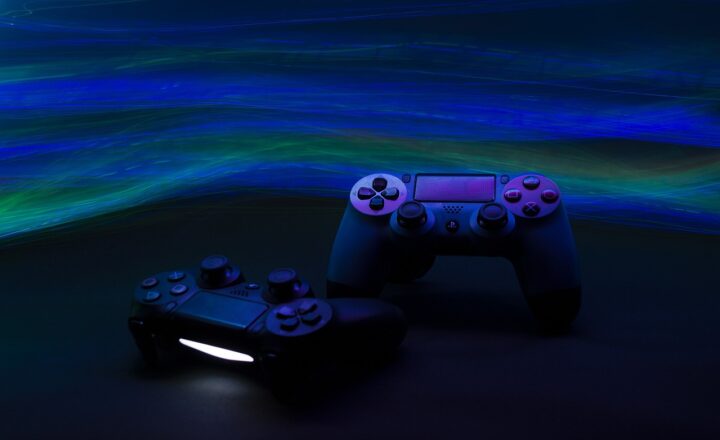
Motion graphics have become an essential aspect of modern digital content creation, significantly impacting how stories are told across various media platforms. As a 3D designer, understanding motion graphics can greatly enhance your work, giving your creations added depth, dynamism, and a captivating visual narrative. This article aims to introduce you to the world of motion graphics specifically catered to 3D designers, providing insights into their importance, tools, techniques, and best practices.
1. What are Motion Graphics?
Motion graphics refer to animated graphic design elements that give the illusion of movement. Unlike traditional animation, which involves intricate character movements, motion graphics often focus on transforming elements and conveying information visually. These elements can include text, logos, and shapes, all of which can move or change over time.
Some common applications of motion graphics include:
- Film and television title sequences
- Infographics and data visualization
- Advertisements and promotional materials
- Social media content
- User interface transitions in apps and websites
Understanding the principles of motion graphics can provide 3D designers with the tools to bring their designs to life, adding a new layer of engagement to their work.
2. The Role of 3D Design in Motion Graphics
As a 3D designer, you have unique advantages when integrating motion graphics into your work. Here are a few ways in which 3D design enhances motion graphics:
- Depth and Dimension: Unlike flat designs, 3D graphics provide a sense of depth, making your animations visually compelling. You can manipulate lighting, perspective, and camera angles to create stunning effects that captivate your audience.
- Realism: Using 3D models allows for realistic textures and materials that can be animated, making them more relatable and immersive than traditional motion graphics.
- Versatility: 3D elements can be animated in various ways, from simple rotations to complex character animations, which broadens the scope of your motion graphics projects.
By merging 3D design with motion graphics, you can create a richer storytelling experience that engages viewers more effectively.
3. Essential Tools for Motion Graphics in 3D Design
To create impressive motion graphics, you need the right set of tools. Here are some essential software and applications that can help you create stunning animations:
- Adobe After Effects: This industry-standard software is widely used for creating motion graphics and visual effects. It allows you to animate, composite, and enhance your 3D models integrated from other applications like Cinema 4D or Blender.
- Cinema 4D: A powerful 3D modeling, animation, and rendering application that is perfect for motion graphics. Cinema 4D’s MoGraph toolset allows you to create complex animations with ease.
- Blender: A free, open-source 3D creation suite. Blender provides a range of modeling, sculpting, and animation features, making it a great option for motion graphics enthusiasts on a budget.
- Adobe Illustrator: Often used for creating vector assets that can be animated in After Effects. Designing elements in Illustrator allows for scaling without losing quality, which is beneficial for motion graphics.
These tools become indispensable as you start to explore the world of motion graphics in your 3D design projects.
4. Fundamental Principles of Motion Graphics
To elevate your motion graphics work, understanding some fundamental principles is essential. Here are a few key concepts:
- Timing and Spacing: Timing is critical in animation. Ensuring each movement is timed correctly can make animations feel more natural and fluid. Additionally, spacing the movements properly helps establish rhythm and flow.
- Easing: Easing is the acceleration and deceleration of movements. It prevents animations from feeling stiff and helps them flow smoother. For example, using an ease-in-ease-out animation gives a more dynamic and pleasing result than uniform motion.
- Hierarchy and Composition: Create a clear hierarchy within your motion graphics to guide viewers through the visual narrative. Effective use of composition ensures that important elements stand out and the animation is coherent.
Integrating these principles into your motion graphics will result in more engaging and dynamic animations.
5. Best Practices for 3D Motion Graphics
To maximize the impact of your motion graphics, consider implementing the following best practices:
- Plan Your Animation: Storyboarding before animating can help you visualize the flow and structure of your animation, ensuring a cohesive narrative effort.
- Keep It Simple: Overly complex animations can confuse viewers. Strive for clarity and focus on strong design elements, allowing them to be understood quickly.
- Optimize Rendering Settings: Motion graphics can be resource-intensive. Optimize your rendering settings to ensure quality output without sacrificing performance.
- Consistent Style: Maintaining a consistent visual style enhances brand recognition and viewer understanding—stick to a defined color palette, typography, and graphic elements throughout your animations.
By following these best practices, you’ll create motion graphics that are visually appealing and effective in delivering your intended messages.
6. Examples of Motion Graphics in 3D Design
Seeing real-world applications can significantly enhance your understanding of 3D motion graphics. Here are a few inspiring examples:
- Film Titles: Many films create captivating title sequences using 3D motion graphics, showcasing their story or themes in dynamic ways. For instance, the opening titles of “Inception” or “The Girl with the Dragon Tattoo” are notable examples of integrating 3D graphics into motion sequences with strong thematic ties.
- Promotional Videos: Brands increasingly use motion graphics to create striking promotional videos. Animated logos and transitions can create excitement and brand identity, as seen with tech giants like Apple or Google.
- Explainer Videos: Complex concepts are often broken down into digestible content through 3D motion graphics. Companies like Dropbox utilize animated infographics to illustrate product features compellingly and succinctly.
Analyzing these examples can inspire you as a 3D designer and help you understand the potential of combining motion graphics into your repertoire.
Conclusion
Motion graphics offer tremendous potential for 3D designers looking to expand their skill set and bring their creations to life. Understanding how to incorporate movement into your designs can elevate your work, allowing you to create visually stimulating presentations that engage your audience.
By applying the principles and techniques discussed in this article, you’ll be well on your way to mastering motion graphics in your 3D design practice. As with any skill, be patient and practice consistently, and you’ll find yourself creating dazzling animations in no time!







